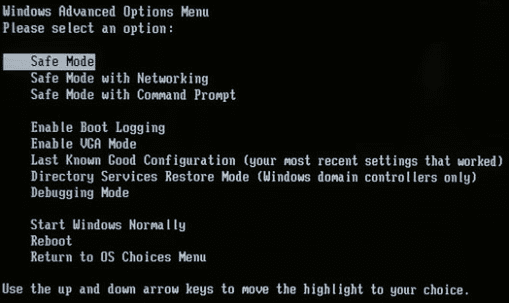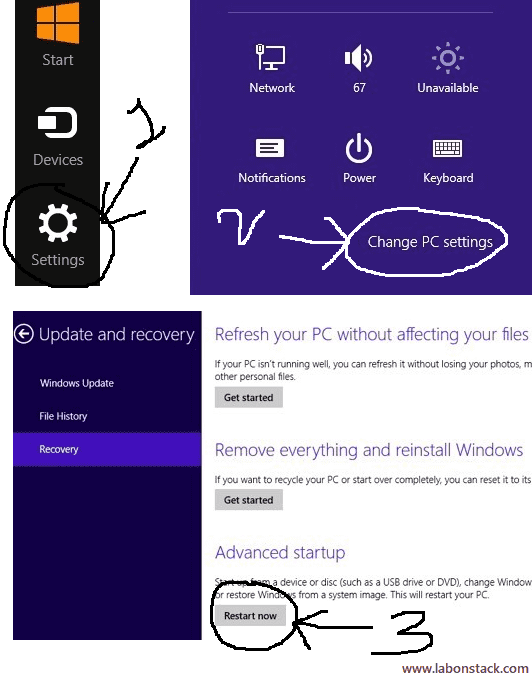Is it necessary to get into Safe Mode on your Windows Computer? Yes sometimes it requires to get into safe mode when you are not able to boot your computer normally, you can try to enter safe mode, a diagnostic mode for Windows. In this article, I am going to explain the steps to get into Safe Mode in Windows XP, Vista, 7, 8.1 and Windows 10. When you run Safe Mode in the window then it runs only most required services and drivers in order for it to run. In Safe Mode, All other normal Windows settings and startup programs are disabled in order to allow the user to fix the problem.
Take one note that if you have recently do any change or installed driver configuration in your computer then you need to try the “Last Known Good Configuration” before starting safe mode in Windows 7, Vista and XP. Here this configuration will load the last working version of windows on your computer. It means when you log into the computer at that time it will replace it every time. So it is my suggestion, if a problem has occurred, make sure to try this option BEFORE logging onto the computer again.
In the Windows 8 and Windows 10, there is no option available for the Last Known Good Configuration. Instead, they have provided other options like Refresh, Reset (Mean Reinstall), Restore, etc.
The three types of Safe Mode is available:
- First, Safe Mode: This option load Windows with GUI interface. This is usually the first option that chooses most people when troubleshooting their computer.
- Second, Safe Mode with Networking, During the safe mode if you need access to the internet or any type of network then this option is required to choose. This is a useful mode when you need an internet connection to fix the problem.
- Third, Safe Mode with Command Prompt: In this options, the window will load the MS-DOS command line prompt. This option is useful if you need to run a DOS command like fixboot or chkdsk.
Steps To Start the Safe Mode in Windows XP/Vista/7
Step 1: First, reboot the computer and then press and hold the “F8 Key”. Now the window will bring up you the “Windows Advanced Options Menu“.
Step 2: Scroll down to “Safe Mode” using the arrow keys and press Enter.

Note: Sometimes you need to simply hold the F8 key continuously during the boot-up period because some computers will start to beep annoyingly.
After trying many times using F8 key and still not able to get into Safe Mode, you can try to kill the power on the computer to turn it off and then turn it back on.
Steps To Start Safe Mode in Windows 8/10
The Process for getting into safe mode In Windows 8 and Windows 10 is completely different. Here the F8 key will no longer work because in Windows 8 and Windows 10 the boot process is too fast. Here you have only way to get into safe mode is to boot into System Recovery Options. Here you can do various troubleshooting tasks including starting in safe mode.
The process for getting into System Recovery Option is slightly different in Windows 8 and Windows 10. So here I will explain to you separately how to get into System Recovery Option in both operating systems.
For Windows 8: Option to Get Into System Recovery
Now when you enter the Windows 8 boot menu, you get a nice GUI interface that with a modern look. This is also called Windows RE (Recovery Environment) or the System Recovery Options.
Method 1 – Press SHIFT + Restart button. This is a good method because you can do it from within Windows.
Method 2 – Using the PC Settings Option. Follow below steps,
- You can do that by opening the Charms bar and then clicking on Settings.
- Then click on Change PC Settings at the bottom of the settings bar.
- Now at the bottom go ahead and click on Update and recovery.
- Click on Recovery in the left menu and you will see the Advanced startup section at the bottom. Click on Restart now and you’re good to go.

Method 3 – Recovery Drive or Automatic. This is the last option. during the boot process, if windows 8 detects any problem with the system then it will automatically load up Windows RE boot options. This will happen if your motherboard supports the new UEFI firmware. If it does not load system recovery option then you can press F8 but you will not have a lot of time since Windows 8 loads so much faster.
For Windows 10: Option to Get Into System Recovery
Here in Windows 10, there is two method to get into the recovery options screen.
Method 1: Using SHIFT KEY and Power Button.
- First, Click on the Start Button.
- Now hold down the SHIFT key and click on the power button.
Method 2: Using the PC Settings Option. Method 2 is the same as Windows 8, but it just looks a bit different. Follow below steps,
- Click on the Start button and then click on Settings.
- Click on Update & recovery option.
- Select Recovery Tab and Click on the restart in advanced startup mode button.
- Now You’ll now see three options: Continue, Troubleshoot and Turn off your PC.
- You basically click on Troubleshoot and go from there.
Today Windows 8 and Windows 10 both are the very smarter than older version. They will normally bring up the recovery options automatically if a problem is detected while booting.